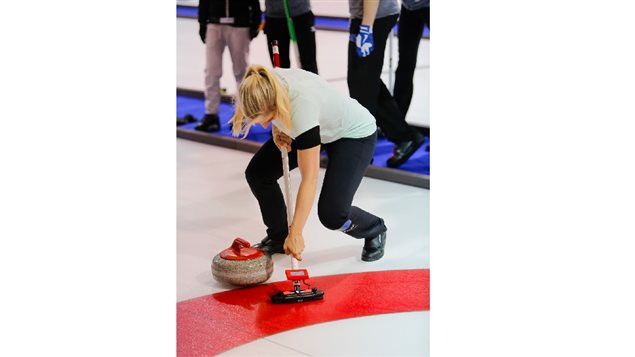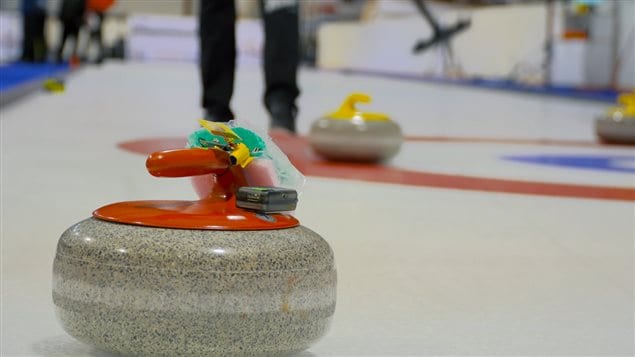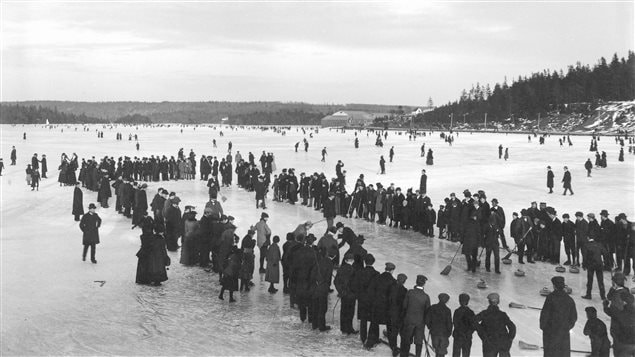“Hard! Hard! “ yells the skip as team members sweep the ice in front of the heavy curling stone (rock) as it slides down the ice.
A technical game of great skill and tactics, curling basically involves just three things, uniform size and weight granite rocks, an ice sheet, and brooms to sweep the ice in front of the stone which can alter its speed and direction slightly.
But as in so many other sports, technology has come into the picture. The rocks must remain uniform, the ice remains ice, but the materials and designs of the brooms might make a difference. Canada’s National Research Council has been commissioned by the World Curling Federation to study the effect of different broom materials. This will be important to develop regulations ahead of 2018 Winter Olympics
Christa Homenick (PhD) is a Research Associate in NanoComposites, Security and Disruptive Technologies at the National Research Council of Canada (NRC).
Listen
Curling is an international competitive sport. Brought to Canada by early Scottish explorers, soldiers and settlers, it has since become an extremely popular sport in this country. It’s called “the roaring game” because of the sound of the rocks as they were slid across the ice making a rumbling sound that echoed through the lake. Some of that sound is still heard as rocks slide down the ice in the indoor curling rinks.
With the advent of the new brooms and techniques, Homenick said the ability to significantly alter the curling rock speed and direction was becoming a real problem for curling associations. She says there was a loss of sportsmanship and animosity between teams because it became more a question of equipment than skill.

Because curling is an internationally sanctioned sporting event, the situation led the World Curling Federation to step in. It wants to keep everyone on a level playing field so-to-speak. In the 2015-2016 season, it placed a moratorium on certain types of brooms until it could be scientifically determined whether they gave the teams using them an advantage over other teams.
Canada’s NRC was chosen by the international curling body due to its renowned technical experience and long association with athletics testing. The testing also involved some of the top curlers in the world to participate in study.
“Athletes also had the ability to stop a rock”
The NRC tests showed that the technology of the new brooms do not just affect the rock trajectory, but can dramatically change it. Homenick said some of the brooms, combined with a particular technique could make the rock take a hard turn left or right as desired “ We had rocks that didn’t even make the hog line as they had turned so rapidly”. She added, “With different techniques athletes actually had the ability to stop a rock…put the brakes on it”.

Three days of tests were carried out at the North Grenville Curling Club in Kemptville, in eastern Ontario. The results will inform the WCF in making possible new regulations on the use of engineered brush heads for the upcoming curling season.
In a press statement, Kate Caithness, President of the World Curling Federation said “Through the rigorous testing taking place, we hope to formulate a set of policies and rules pertaining to brush head technology and sweeping techniques, which will be presented to our Member Associations for ratification. The plan is to have all this accomplished before the start of the 2016-2017 season.”

Any new regulations will be proposed for approval by WCF Members at the WCF’s Annual General Assembly, to be held in September 2016 in Stockholm, Sweden.
As the high-tech brooms are also available to recreational curlers, it is expected that new regulations will trickle down to national levels, and then possibly modify regulations at local levels.







For reasons beyond our control, and for an undetermined period of time, our comment section is now closed. However, our social networks remain open to your contributions.